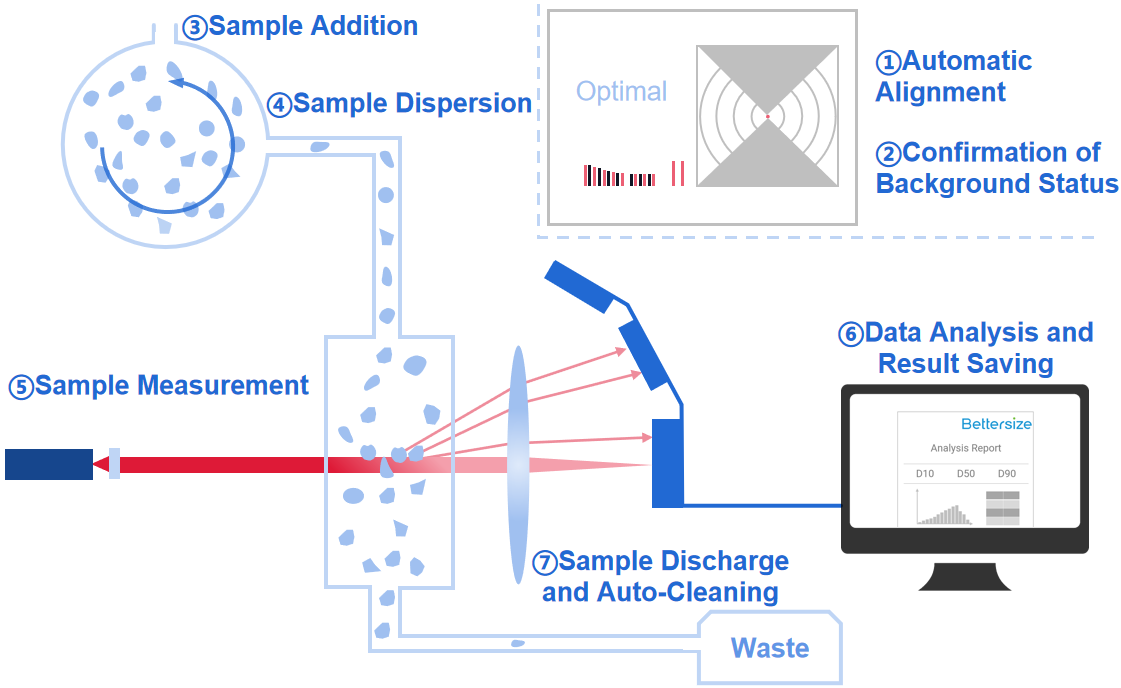How is a measurement made with a laser diffraction particle size analyzer?
2023-07-14WIKI
In laser diffraction particle size analysis, the measurement is carried out using the following sequence:

Automatic Alignment
This is an adjustment function that enables the focused laser to pass through the Fourier lens and coincides with the center of the forward detector. The alignment will be carried out automatically until the laser light impinges perfectly on the center of the forward detector. Once aligned, the detectors will receive the correct scattering light signal for the baseline measurement. Before alignment, the sample cell should be completely filled with measurement medium, and bubbles and dirt need to be eliminated when using the wet method. Gas needs to be introduced to the measurement zone when using the dry method.
Confirmation of Background Status
A high background signal may be caused by optical or electrical noises, e.g., optic noise that is caused by the dirty sample cell or even by pure media. To zero out the influence of those noises, the background signal should be measured prior to the measurement, such that it can be subtracted from the total light scattering signal on completion of the measurement.
Sample Introduction
After confirming a good background, the sample can be introduced (or pre-dispersed sample) to the dispersion module.
Sample Dispersion
Once inside the dispersion module, the sample will be dispersed using stirring and ultrasonication in the wet method. The pressure will be adjusted, and collisions and shear force will be ensured in the dry method.
Sample Measurement
A fully dispersed sample will be transported to the sample cell, where the laser irradiation occurs. A laser source emits a beam of monochromatic and coherent laser light. This laser beam is then filtered, expanded, and collimated to ensure parallel rays. If particles are in the beam’s optical path, they will interact with the light in the form of scattering. A portion of light rays is scattered outward at certain angles with respect to the principal axis. Larger particles scatter greater amounts of light at smaller scattering angles, while smaller particles scatter greater amounts of light at larger scattering angles.
Data Analysis and Result Saving
Signals caused by scattered lights can be received by the detectors and transmitted to the computer to be analyzed so the system can generate a particle size distribution.
Sample Drainage and Auto-Cleaning
After the measurement, the sample will be drained, and the auto-cleaning will be activated.




